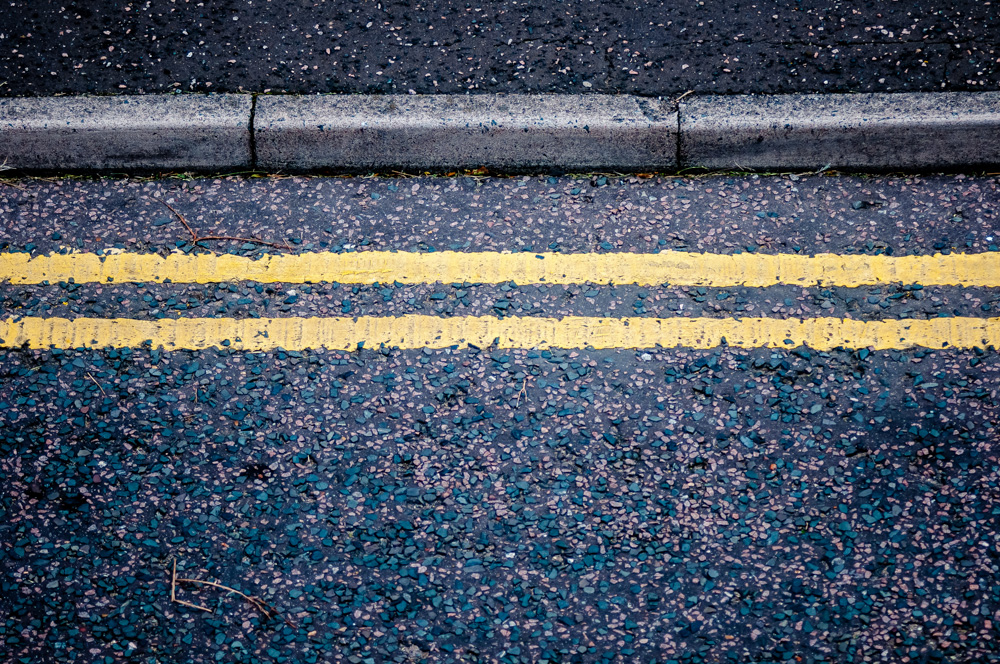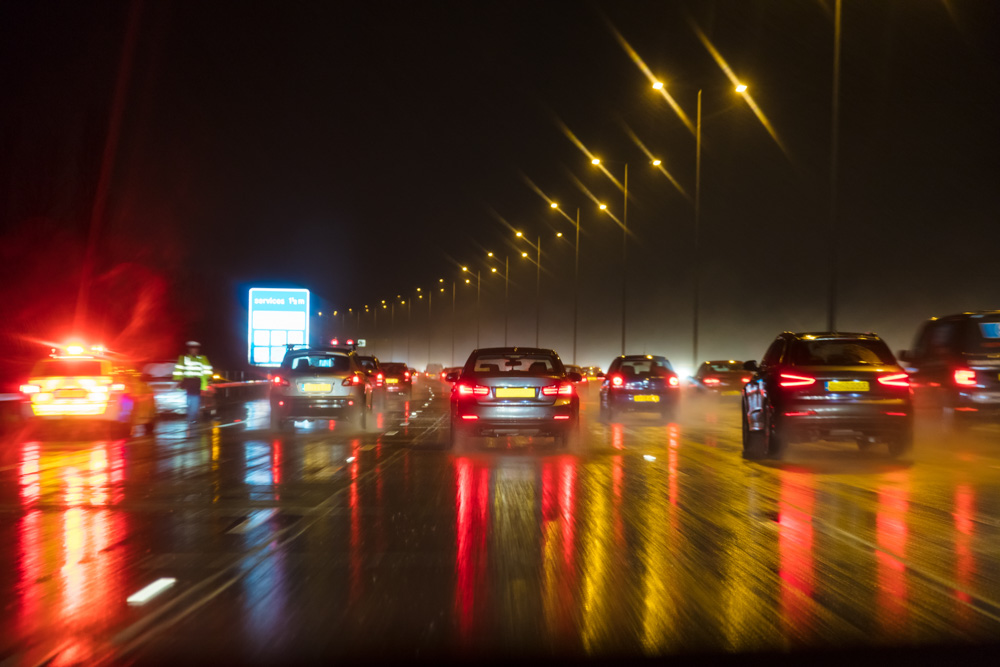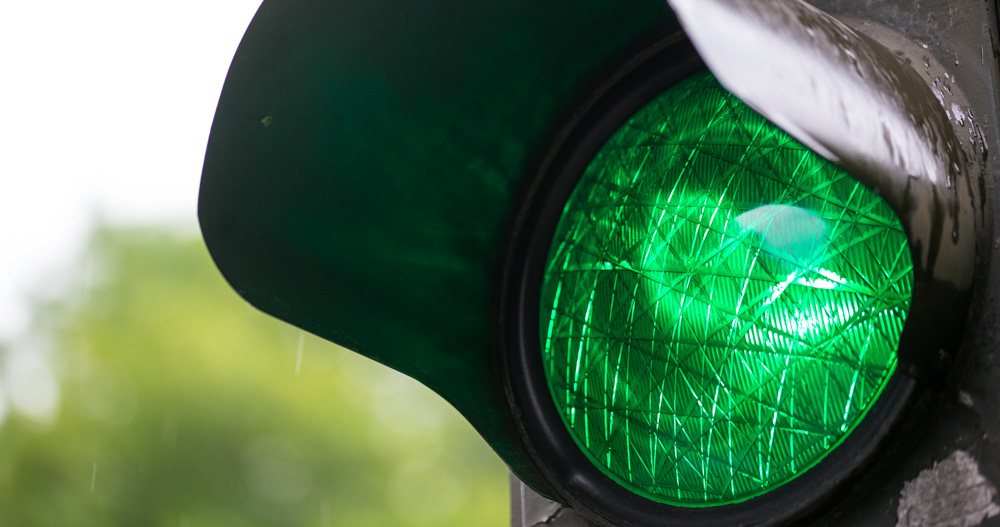We’ve talked about how we and our bodies shaped driving but what about how we came to have the modern roads we drive on today?

Before the development of modern communications, roads were what connected us as people. As such, they were driven by economic, political and military forces. People needed to get produce to market. The government wanted to tax and enforce its power on those it controlled and from the government’s point of view, the more people it controlled, the more tax is raised and the more powerful the government became.
The first roads were tracks and people themselves carried the loads. We then started to domesticate animals, for food, company and to help grow crops. It was inevitable that we would then start to use animals to help carry loads. The development of further transport was limited by the environment, would an Inca peasant working on his mountainside terrace need and be able to use a cart?
As we discovered mechanical advantage, animals began pulling our carts and we wanted better tracks to get us from A-B. The compacted dirt road pretty soon turned to mud in the rain and dramatically increased its resistance to a turning wheel. The wheel itself, if too narrow would sink down into the road and in the dry, dust became a problem.
The solution to the sinking wheel was to be a harder stone road. Big stones at the bottom becoming smaller at the top. The ride would not be smooth but you and the load were getting to your destination. Rainwater was still a problem but this was solved by John Metcalf. He did this by giving the road a camber and good drainage.
John McAdam was the first ‘modern’ road builder and gave his name to the Macadam surface in the 1800s. His brilliant innovation was realising that roads did not need massive stone foundations. By ensuring that the top stone surface was made with stones smaller than the tyre width he innovated a smoother running surface, but there was still a dust problem. Eventually, someone took the top surface and mixed it with tar and leaving us with a tarmacadam road, that’s tarmac to you and me.

Thanks to the introduction of tarmacadam roads we had a road on which our vehicles could perform their different functions. But as we moved into towns and cities we needed to something to separate people from the road. For this, we used the raised pavement. Pavements have been around since Roman times but began to play a necessary role as our towns and cities became busier with vehicles. To protect the edge a solid granite kerb was added. In fact, if you look at a kerb you will most likely see black tyre marks upon it, visible proof of the job the kerb does in defending the pavement!
Now we’re going to be talking about street lamps, road signs and road markings!

On the road, which is now made up of a carriageway for vehicles and a footway for people, we need to add some street furniture. This is road signs, street lights and boxes of various sorts. Post boxes, phone boxes etc.
Street lights, of course, make things safer as they help us see and there is a trend now to set them back away from the road in order to light the pavement for pedestrians. Where there are lots of people you’ll find more street lamps so you can see others and they can see you.
As more and more of us started using vehicles it became apparent that there needed to be rules, so we added road signs and road markings to the mix. Obviously, we needed to see these signs and road markings which is why it was important to understand what the eye sees. Yep, it’s not just a sign, it’s a science. First, the eye sees movement, like the flash of your indicators. Then it sees colour, such as red for danger and lastly the eye sees the shape.
With road signs and markings it is important that we all recognise and understand them. For example, in the UK our “L” plate has a standard format and all road signs and markings must conform to The Traffic Signs Regulations and General Directions (commonly abbreviated to TSRGD). Our road signs also look much like the European ones. There is even a Vienna Convention on Road Signs and Signals, what’s the point in having to learn a whole new set of rules each time your car crosses a border? The purpose of all this is a common understanding that binds us together for mutual safety.
We also started to write on the road. ‘Stop’ meant a hazard ahead. The sandy coloured road surface meant better grip and the red and green you still see on the road has no legal meaning but it does emphasise the white paint that does.
Now it’s about speed limits, why we have them and how they help.

As the roads improved and vehicles got better things became faster and the need for speed limits became apparent. These limits are based around stopping distances and in the case of hitting a person, their chances of surviving the impact. Interestingly the 70 mph stopping distance is not too dissimilar to the length of most sporting pitches and the 30 mph stopping distance is just over the length between cricket wickets.
A problem with speed is, the faster the speed the greater the likelihood of death if you hit a pedestrian. At 40 mph studies showed that the chance of death is over 80%. At 20 mph it drops down to 5%. The reason it jumps from 5% at 20 mph to over 80% at 40 mph is down to the laws of physics. As the impact speed doubles, the energy imparted to a collision quadruples. Blame Sir Isaac Newton for that one.
This brings us back to 30 mph, and it is all to do with people surviving their mistakes. Children do run out into the road, old people maybe can’t cross the road as quickly as others and people who have been drinking are less aware. At some point in our lives, we all make a mistake. Without a speed limit, these mistakes could be a death sentence.
The greater the difference between the speeds of the different road users, the more likely a collision and the worse the impact. So if a bike is doing 10 mph and is rear-ended by a car doing 30 mph. The difference is just 20 mph. Not nice but hopefully survivable. But if hit doing 30 mph was 40 mph the difference could well be life or death.
Next its traffic.

As cars began getting faster and the traffic more intense, crossing the road safely became a bigger problem. The initial crossings were a parallel set of studs with two Belisha Beacons. As these were being ignored both by people and car drivers, a number of improvements were made. The Belishas started flashing and coloured stripes were introduced, leaving us with the black and white crossings we know today as Zebra Crossings.
If the number of people wanting to cross is so many that it holds the traffic up for to long or the traffic is moving to fast to make stepping onto a crossing safe. We put in a set of lights. At traffic light controlled junctions we can put in a pedestrian crossing phase. With the use of textured paving and buttons to press they become blind friendly.
As the roads became more congested it became necessary to control who had priority. For example, a busy road will always require a minor road off it, in order to give way.
Those of us who are a bit older will remember a policeman wearing white gloves, controlling the traffic. They were a good solution when the traffic only had certain peaks. The downside is, that if they were controlling traffic they were not available for other duties. However, nowadays this fine instrument of law enforcement has totally been replaced by roundabouts and or traffic lights and just like our good friend the Bobby they will keep going until something breaks or is worn out. But without human costs.

Roundabouts replace crossroads and required the car entering to give way to the traffic on the roundabout which was fine when the traffic was relatively light. But consider that, nowadays at a normal roundabout you will have four roads feeding traffic into a small space. It’s understandable how they can go into gridlock.
Our most effective solution is traffic lights. The meaning of the lights is universally recognised. You can be colour blind and still know which light is which as they each have their own position. The interesting light is the one in the middle, the yellow one. As we approach and the light goes yellow do we stop or go. This is called the dilemma zone and where mirrors pay off.
Lights can be programmed to allow for the peaks and troughs of traffic flow. They can be linked and respond to traffic conditions so the flow cascades down the road. Emergency service vehicles can be given priority by transmitting a signal to the lights allowing them through.
All in all, they connect us as drivers because we need to use them in the same way this gives us a shared experience and commonality. They are how we cooperate with each other for the greater good.
Without our smooth roads, speed limits, road signs, markings on the road and traffic lights our roads today would be a very different and a lot more dangerous. All these things are not there to slow us down, they’re there to keep us safe and to keep things running smoothly.


